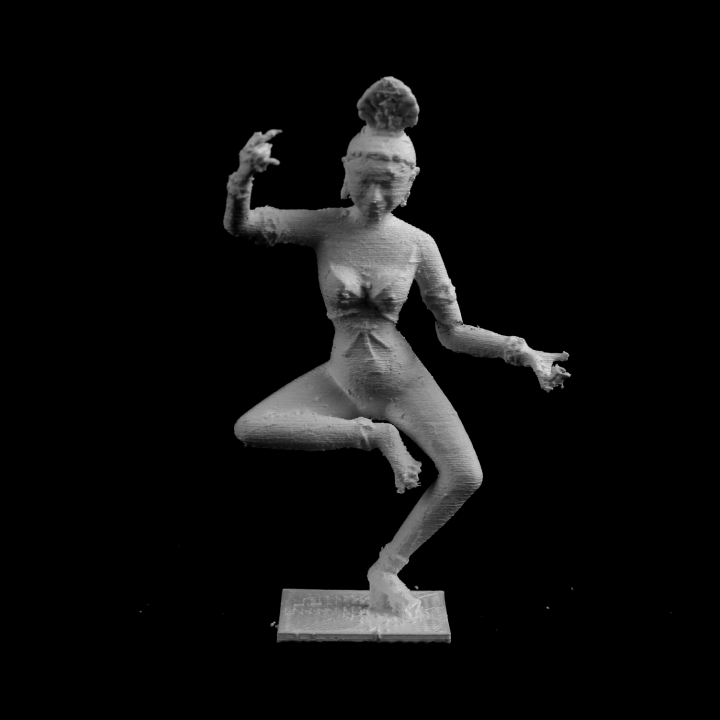
Dancing Dakini at The Guimet Museum, Paris
myminifactory
A Dakini is a type of spirit in Vajrayana Buddhism that is closely related to drumming. The Tibetan term for Dakini translates to "sky goer" and may have originated from the Sanskrit term Khecara, which means sky wanderer. Dakinis are often depicted as consorts in Yab-Yum representations, where they are paired with male spirits known as Daka. The masculine form of Dakini is Daka, which is usually translated to Tibetan as Pawo or hero. Dakinis first appeared in medieval legends in North India as a demon who feeds on human flesh and is associated with the goddess Kali. They are comparable to malevolent female spirits found in other cultures such as fairies and imps. The Dakini figure was disseminated into Japanese culture from Shingon Buddhism, evolving into the Dakini-Ten or Deva. The Dakini plays a key role in Vajrayana formulations of the Three Jewels Buddhist refuge formula known as the Three Roots. In these formulations, she appears as the Dharmapala alongside a guru and yidam. The Dakini serves as each of the Three Roots: human guru, wisdom Dakini, or protector. The archetypal Dakini in Tibetan Buddhism is Yeshe Tsogyal, consort of Padmasambhava. This object is part of "Scan The World," a non-profit initiative by MyMiniFactory that aims to create a digital archive of 3D printable sculptures and landmarks from around the world for public access.
With this file you will be able to print Dancing Dakini at The Guimet Museum, Paris with your 3D printer. Click on the button and save the file on your computer to work, edit or customize your design. You can also find more 3D designs for printers on Dancing Dakini at The Guimet Museum, Paris.
